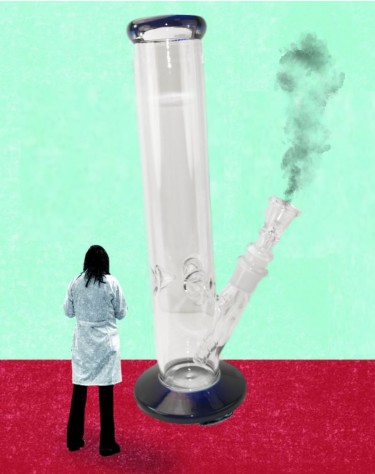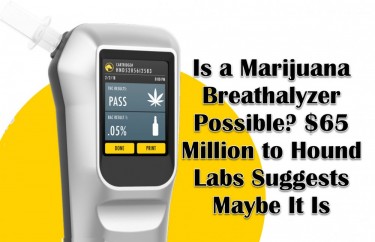
Why Breathalyzer For Marijuana Don’t Work Well Yet!
As more states legalize cannabis each year, authorities have had some concerns about driving disability.
There are already effective technologies, particularly breathalyzers, that can be used to test the alcohol consumption of drivers on the roadside. However, it seems that reality is still a long way off when it comes to testing for cannabis impairment, and while it is already successful with alcohol, the same technology simply cannot work with cannabis.
A recent study by researchers at the University of Sydney found that breathalyzers for marijuana are still inefficient at testing for THC. For the study, they reviewed 28 older existing studies that analyzed THC levels in the saliva and blood of drivers and measured their performance. They just found conflicting results. In particular, they focused on studies that assessed driver alertness and reaction time, which are critical to safe driving. Although they found significant links between impairment in inexperienced marijuana users and THC levels, the associations disappeared when drivers were already experienced users.
“Higher THC concentrations in the blood were only weakly associated with increased impairment in occasional cannabis users, while no significant association was found in regular cannabis users,” explains lead author Dr. Danielle McCartney. “This study suggests that blood and oral levels of THC are relatively poor indicators of cannabis-THC-induced impairment.”
In addition, for a cannabis breathalyzer to work effectively it would have to use a different biomarker, since measuring cannabis impairment just like alcohol simply cannot be reliable. “On the other hand, there is the much stronger connection between blood and alcohol concentration and driving disability,” the researchers said.
EPOCH
Late last year, scientists developed EPOCH, a breakthrough technology for rapid THC detection, which stands for Express Probe for On-Site Cannabis Inhalation. It works by concentrating saliva levels to check current THC levels, and it indicates whether or not THC is more or less than 1 nanogram per ml of saliva over a 12 hour period.
You have discussed its accuracy and sensitivity at length, although there are still some skeptics. The developers argue that the new device offers a lot of possibilities besides just determining who gets high. “We envision that our device will be useful for on-site testing of THC use,” said Hojeong Yu, a Harvard Medical School postdoc, and Hakho Lee, Associate Professor of Radiology at Harvard Medical School Inverse.
“These are usually done in specialized laboratories and processing can take days,” they write. “Test results could also be ambiguous in determining recent cannabis use, as residues of THC and its metabolites are often present in the body weeks after cannabis ingestion and it is difficult to separate acute recent use from chronic use,” they say.
“This applies not only to roadside tests, but also to tests in workplaces and in public areas,” they add.
“Such tools can be of value in identifying people who have been exposed to cannabis relatively recently,” Paul Armetano, deputy director of NORML, told Inverse. “But I have pointed out that such detection technology is incapable of determining whether someone is under the influence of cannabis, and therefore a positive test result should not be taken as prima facie evidence of impairment.”
Why Cannabis Impairment Is Difficult to Measure
Alcohol breath analyzers took decades to develop before the technology was successful. However, there are still many who believe that they still have a high margin of error. But the challenge presented in measuring cannabis impairment is entirely different and has its own unique problems.
For one thing, cannabis stays in the human body much longer than alcohol; In fact, as soon as you start drinking, the body is already metabolizing it. Because of this, measuring how much THC is affecting the driver is not that easy as it can stay in the body for a month or even longer after the initial high has worn off. Even if urine and blood tests can determine the presence of THC, this is not enough for the police and does not provide enough evidence that the driver was impaired at the precise moment in an accident.
There’s also the fact that the amount of alcohol you drink is directly related to your drunk behavior (and your driving), but this doesn’t apply to cannabis. A person can have a lot more THC in their body because they have more fat cells as THC sticks to the fat cells and that doesn’t mean they are stoned.
What also makes it so complicated is that everyone processes and metabolizes cannabis differently, which is why it has so drastically different effects on everyone. For example, a person smoking 2 puffs of a bong may not even feel stoned, while the same amount can throw someone completely off the rails. For alcohol, scientists have set 0.08 as the legal limit for the blood alcohol concentration, but for cannabis this value cannot be determined. That hasn’t stopped some states from enacting laws governing how much THC is needed to say you’re high, but there really isn’t a global or national consensus.
Although it would be good to quantify things, police officers are still trained to tell if a person is high. They check for reaction times, red eyes, dilated pupils, and look in the car for smells or signs of cannabis smoke. So while we wait for scientific breakthroughs and until scientists can identify an effective biometric trait, cannabis alcohol analyzers may not work until then.
MARIJUANA BREATHING DEVICES, READ MORE …

DID THIS CHEMISTRY JUST SOLVE THE MARIJUANA BREATHALYZER PROBLEM?
OR..

HOUND LABS BET $ 65 MILLION ON A MARIJUANA BREATHING DEVICE!

Post a comment: